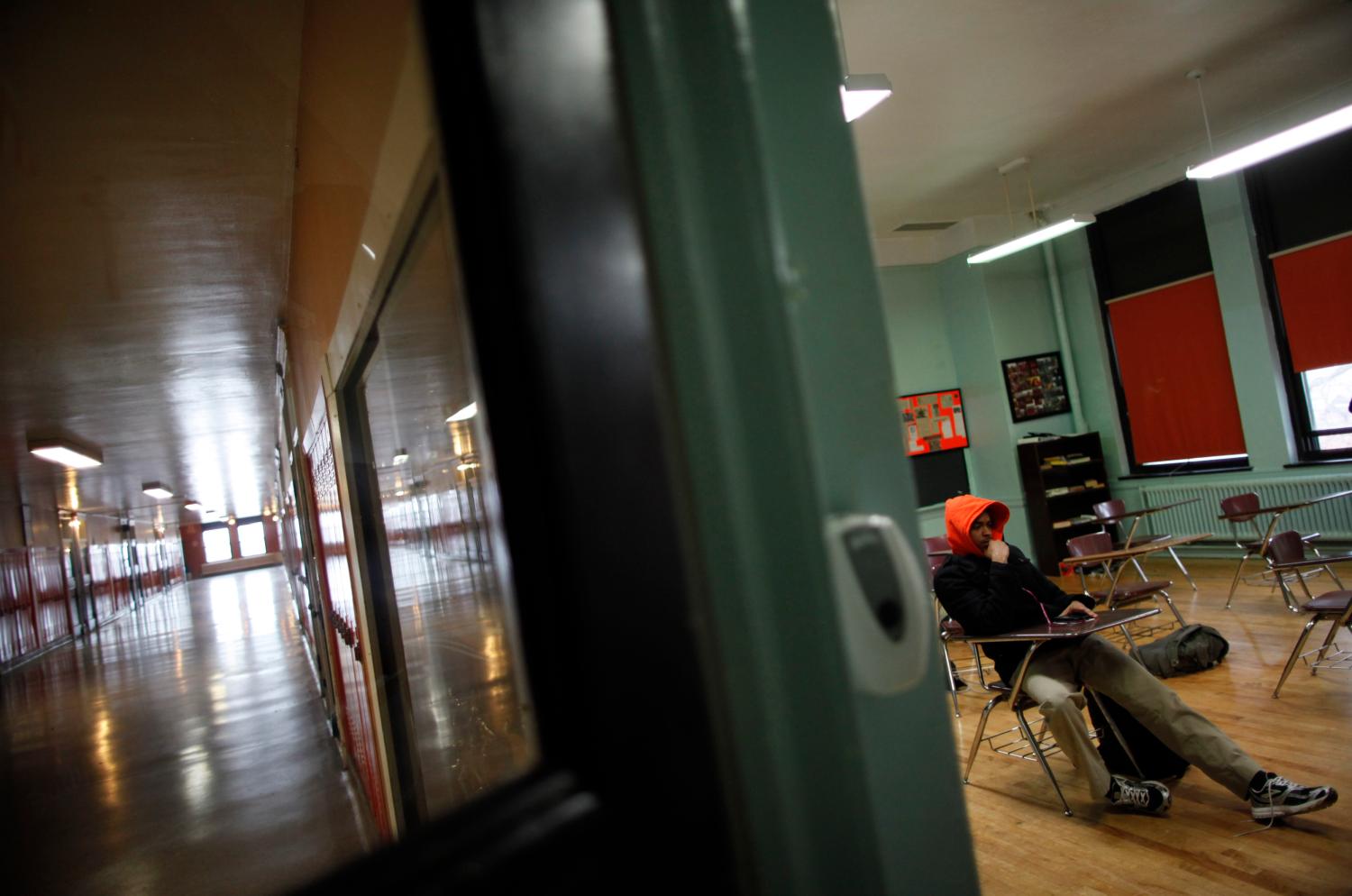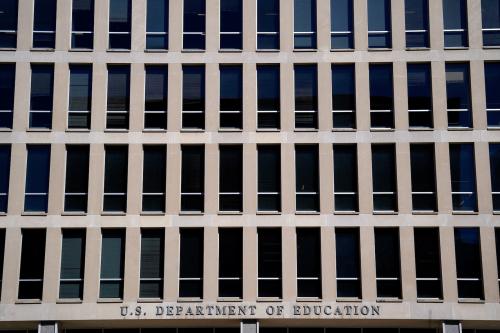The U.S. Department of Justice has entered into a lawsuit opposing Louisiana’s voucher system. The state’s program, passed into law in 2012, offers a voucher to attend a private school to students from families with incomes below 250% of the poverty line attending low performing public schools. Parents apply for the vouchers and to date about 90% of the recipients are black.
The DOJ is not intervening as you might naively expect because of concerns about the constitutionality of voucher programs, or because they believe that private schools in Louisiana discriminate, or because they think the state has designed its voucher program in a way that discriminates against minorities. No. Their argument is that the voucher program will have an impact on federal desegregation orders that require certain school districts to achieve a racial distribution in each of their schools that mirrors the racial composition of the district as a whole. So, if 40% of the school-aged population in these districts is black then each school has a target of 40% black enrollment.
Here is an example the DOJ provides of the harm caused by the voucher program they are intervening to halt:
. . . in 2011-2012, Celilia Primary School in St. Martin Parish School District enrolled a student body that was 30.1 percent black, 16.4 percentage points lower than the black composition (64.5) of St. Martin Parish School District as a whole. In 2012-2013 Celilia lost six black students as a result of the voucher program, thereby increasing the difference between the school’s black student percentage from the district’s and reinforcing the school’s racial identity as a white school in a predominantly black school district.
So let’s get this straight: the DOJ is in court to prevent six black families from taking their kids out of Celilia Primary School because if they did it would mean that there would be six fewer black kids in Celilia Primary School and this would, what, be bad for the black kids that departed, or for the black kids that remain, or for all the kids? The DOJ makes no assertion about educational impacts. Rather it argues that six black students leaving impacts the racial identity of the school.
There are two reasons the DOJ position is wrong, one technical and the other moral/legal.
Technically, the number of children affected by vouchers in the schools that are the concern of the DOJ is too small to have an effect on the schools’ racial identity. Take the DOJ’s example of Celilia Primary, which they presumably chose because it best makes their case. The annual black census of Celilia Primary School has averaged 273 students over the last 10 years with a large variation from year to year (standard deviation = 36). A decrease of 6 black students in a particular year does not approach a statistically significant difference in black enrollment from one year to the next much less a change that would lead the community at large to see the school as having a different racial identity.[i] This is very likely to be the case in all of the 34 schools the DOJ views as having become more racially identifiable as a result of the voucher program in that they assert that “the net loss ranged up to 13 students per school.”
This same issue arose in the 2007 Supreme Court Case, Parents Involved in Community Schools v. Seattle School District No. 1. The Court rejected the use of race by the school district as a tiebreaker to assign students to schools because, in part, the “effect is thus merely to shuffle a few handfuls of different minority students between a few schools . . . The District has not met its burden of proving these marginal changes . . . outweigh the cost of subjecting . . . students to disparate treatment based solely upon the color of their skin.”
The average elementary school in Louisiana has 472 students.[ii] Let’s assume that the net loss of “up to 13 students” per school described by the DOJ means an average loss of about 7 students per school. Thus the DOJ’s petition is about less than 250 students from a total of 34 schools in Louisiana in 2012-13 who transferred, arguably because of a voucher, and in so doing affected the numerical racial balance of the schools they departed – this in a state with over 1,500 public schools and nearly 700,000 students.[iii] Isn’t the DOJ position exactly what the Supreme Court found unacceptable in Seattle: school assignment based solely on skin color that involves too few students to have any real impact?
The second problem with the DOJ position goes to the intent of the Civil Rights Act of 1964, and the reason we had a civil rights movement of which the Act was a legal capstone.
I grew up in the 1950s in a small southern town that was for many white kids a blend of Mayberry R.F.D. and Happy Days. But there was another side of town (metaphorically and geographically) in which conditions didn’t lend themselves to the plot of T.V. sitcoms. There one found the open, putrid wounds that were the legacy of slavery: whites-only drinking fountains, lunch counters where blacks couldn’t sit, segregated waiting rooms in doctors’ offices, abject poverty, and, yes, separate and distinctly unequal schools.
I think of the civil rights movement, the ensuing Civil Rights Act of 1964, and the real progress the country has made on matters of race in the last 50 years in terms of choice – first the removal of the legal barriers that prevented people of color from choosing where to sit on a bus, where to buy a house, or where to go to school, and then the reduction of the functional barriers to those choices.
Removing barriers to choice based on race is very much a part of the school reform movement as we know it today. This can be seen in several guises, including the requirement in No Child Left Behind that parents of the predominantly poor and minority children in persistently low performing public schools have the right to transfer their child to a better public school; the growth of urban charter schools, which are public schools of choice that serve a largely minority population; the implementation of open-enrollment plans in cities including New York, Chicago, Boston, Denver, and New Orleans that base school assignments on parental choice rather than residential zip code; and the growth in voucher and tax-favored scholarship programs that permit poor parents to send their children to private schools.
As I see and celebrate it, the Civil Rights Act and the ensuing efforts to create a racially equitable public school system have been about first allowing and later facilitating the ability of families whose forbearers were brought to this country as slaves to access better schools for their children, i.e., to have similar choices to those available to white families. To put it in personal terms, it has been about righting the wrong that was done to those black kids who lived a block behind me when I got to go to a spanking new high school and they were consigned because of their skin color to dilapidated and underfunded P.S. Jones.
The civil rights movement has been fundamentally about affording to blacks choices they would otherwise have been denied because of the color of their skin or the legacy of the lives their ancestors were forced to live under slavery and de jure segregation. But here we have the DOJ, which has historically been the force behind advances in civil rights, taking choice away from the very families the civil rights laws the DOJ is enforcing are supposed help. In effect, the DOJ is saying that they will deny black parents the right to send their children to the school the parents choose and force them to send their children to the school the courts choose because if they do otherwise it will mess up the spreadsheets the DOJ uses to determine whether its racial desegregation orders are being followed.
In its actions against Louisiana the DOJ is in the position of engaging in the very forms of discrimination the courts have ruled impermissible for schools themselves. Based on Supreme Court decisions and other case law, the U.S. Department of Education and the Justice Department have jointly issued guidance for school districts on using race in school assignments.[iv] That guidance says that a school district “. . . may consider using an individual student’s race as one factor among others in considering whether to approve or deny the student’s transfer request [but that]. . . no student applicant to a school or program should be insulated – based on his or her race . . .” But the DOJ has petitioned the courts to permanently enjoin the state of Louisiana from awarding school vouchers to students in school districts operating under federal desegregation orders, and the only consideration they bring to bear is the individual students’ race. If the state tried to award vouchers on the same basis that the DOJ wishes to deny vouchers, in other words solely using student race to achieve racial balance, it would be shot down legally, and justifiably so.
I hope the DOJ petition is really about the state not asking for permission from the courts for what it is doing in districts under federal desegregation orders rather than about preventing six black families from transferring their kids out of Cecilia Primary School. If so, I hope the state genuflects to the court quickly and successfully and the DOJ’s interest in the case thus goes away. But if the DOJ persists in actions that have the effect of denying poor black parents whose children are trapped in underperforming schools the opportunity to choose something different and possibly better, then this is the civil rights division of the DOJ suppressing civil rights – ironic and tragic in the extreme.
[i] My calculations from Common Core data available online at NCES
[ii] http://nces.ed.gov/programs/digest/d11/tables/dt11_104.asp
[iii] http://nces.ed.gov/programs/digest/d11/tables/dt11_103.asp
[iv] http://www2.ed.gov/about/offices/list/ocr/docs/guidance-ese-201111.pdf
The Brookings Institution is committed to quality, independence, and impact.
We are supported by a diverse array of funders. In line with our values and policies, each Brookings publication represents the sole views of its author(s).





